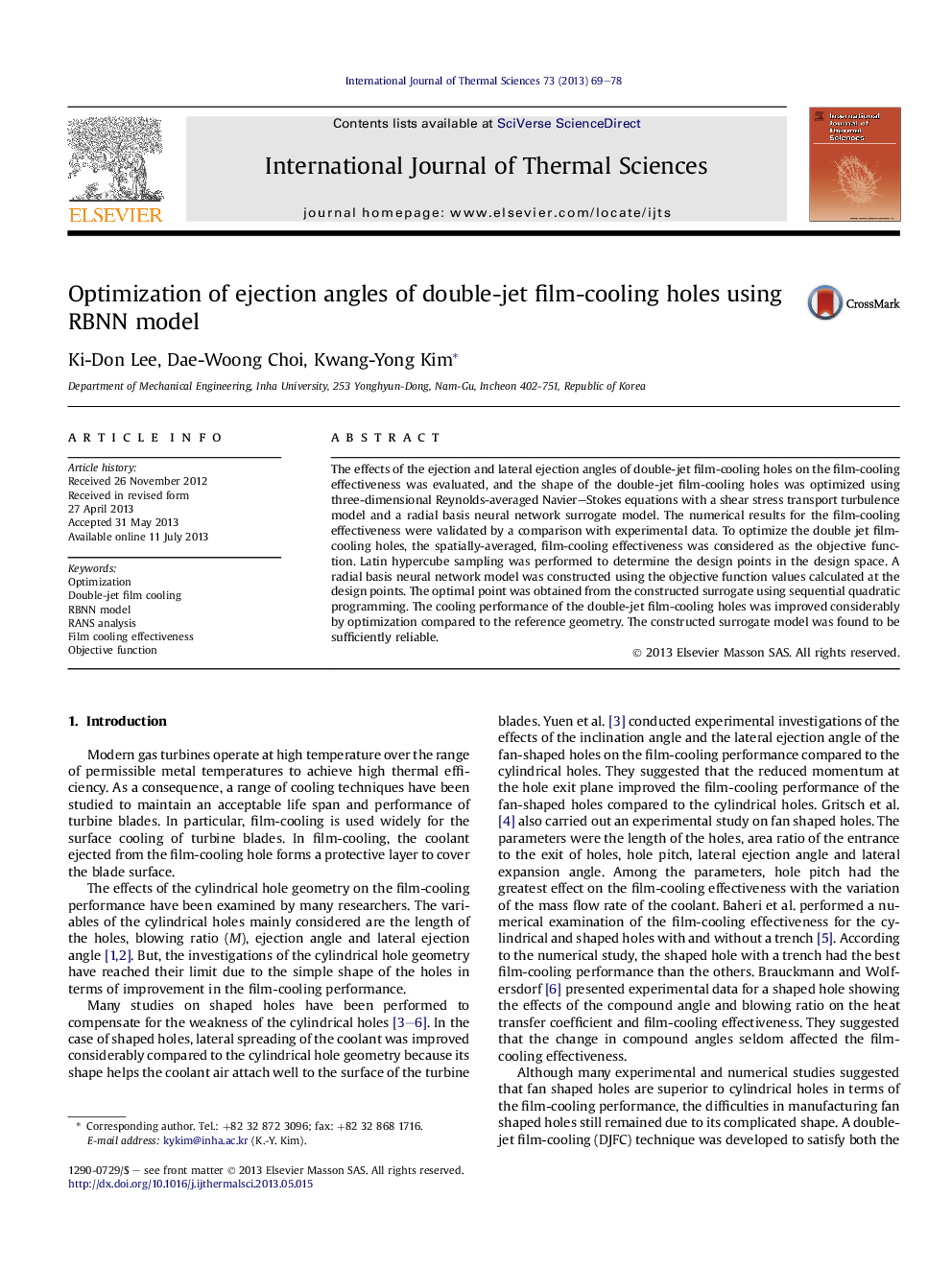| Article ID | Journal | Published Year | Pages | File Type |
|---|---|---|---|---|
| 669654 | International Journal of Thermal Sciences | 2013 | 10 Pages |
Abstract
The effects of the ejection and lateral ejection angles of double-jet film-cooling holes on the film-cooling effectiveness was evaluated, and the shape of the double-jet film-cooling holes was optimized using three-dimensional Reynolds-averaged Navier-Stokes equations with a shear stress transport turbulence model and a radial basis neural network surrogate model. The numerical results for the film-cooling effectiveness were validated by a comparison with experimental data. To optimize the double jet film-cooling holes, the spatially-averaged, film-cooling effectiveness was considered as the objective function. Latin hypercube sampling was performed to determine the design points in the design space. A radial basis neural network model was constructed using the objective function values calculated at the design points. The optimal point was obtained from the constructed surrogate using sequential quadratic programming. The cooling performance of the double-jet film-cooling holes was improved considerably by optimization compared to the reference geometry. The constructed surrogate model was found to be sufficiently reliable.
Related Topics
Physical Sciences and Engineering
Chemical Engineering
Fluid Flow and Transfer Processes
Authors
Ki-Don Lee, Dae-Woong Choi, Kwang-Yong Kim,
